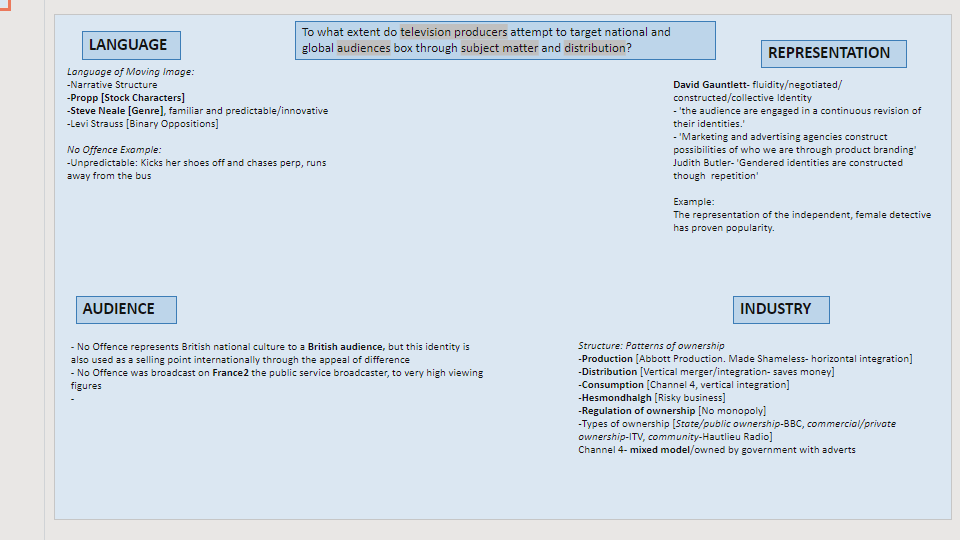Difference between culture industries and other industries:
- Media industries don’t have a set structure and can be creative free. In other words, there isn’t a set of rules that specifically apply to culture industries. Free roam of creativity. Other industries have a set of rules they follow, for example in a bakery, you are told what to make and how to make it, but culture industries act as a dog being let of a leash.
- Culture industries supply people with information they may need. For example, the weather channel tells people what the weather is and they determine what people where/take to work (umbrella if its raining). Whereas, other industries
- One (other industries) necessity and another (Culture industries) is for entertainment.
- A bakery is predictability as they repeat what they make however culture industries are vertile.
- Information (Culture industries) plays a pivot role in the way it organises peoples sense of the world. – Golding and Murdock
Similarity’s between culture industries and other industries:
- Both industries produce their products for money for the business.
- Both are jobs for people for income.
Media Ownership:
- Capitalist Media
- Public Service Media
- Civil Society Media
Public Service Broadcasting:
- What is public service broadcasting? – Public service broadcasting is a public television service presented to citizens, that is funded by a TV licence fees from the government. It is also diverse as it has to cater for multiple ages groups and likings. It has to live up to “Inform, educate and entertain” and live up to quality standards. Often state run, and state funded.
- What is unique about BBC and C4? –
- What is good about the BBC – No ads. Diverse (Choose what channel you wants). Is free to watch in parts. Familiar to British people and is part as the British’s peoples identity’s as well it is a long and proud tradition within the UK. Not all controlled by the government and is critical of the government.
- What is the criticism of the BBC? – Pay for TV license and people don’t want to pay for it. May not be 100% accurate.
- CSP – James Curran and Jean Seaton.
Essay – Industries, PSB/ Curran and Seaton, CSP (Channel 4 – No Offence)/ Hesmondhalgh/ Audience (pg 1-4, not in book)


